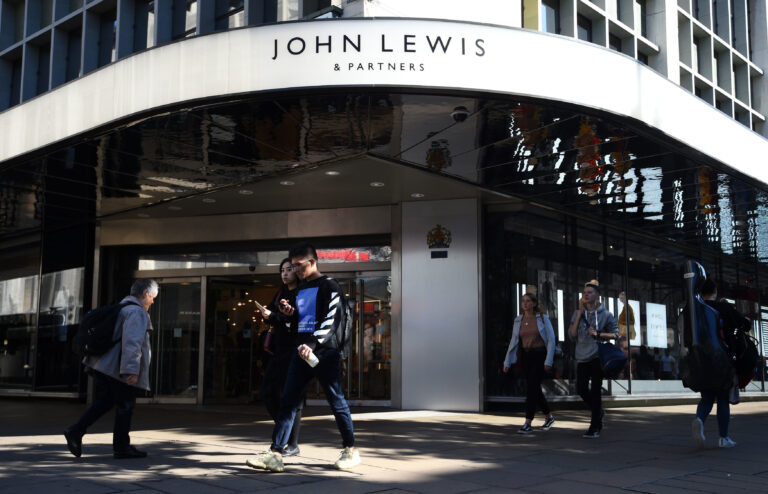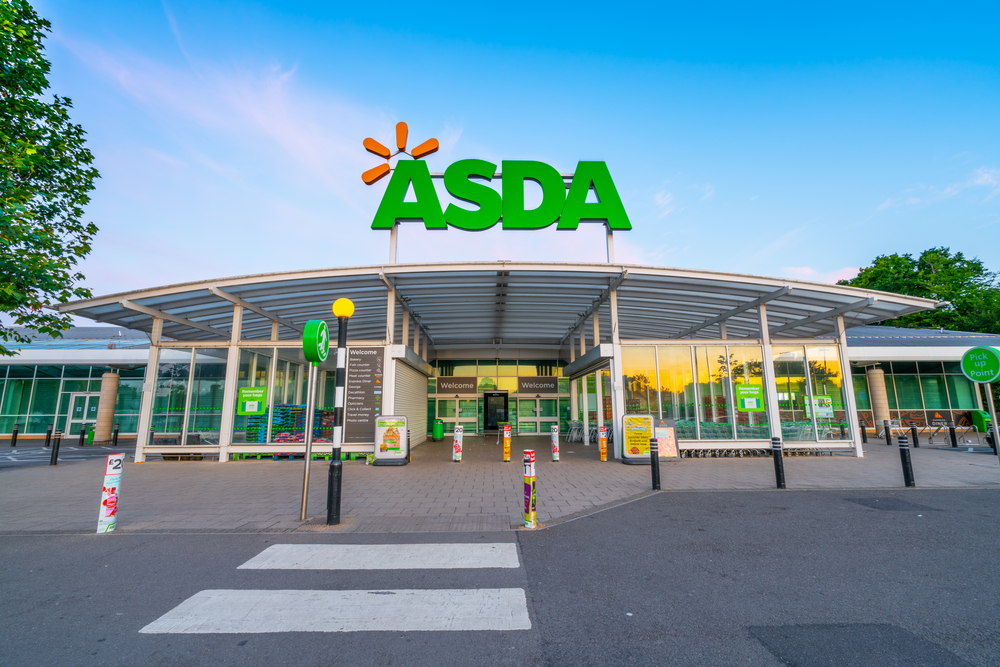// John Lewis Partnership swings to pre-tax loss of £635m, but on an EBITDA basis it’s a £55m loss – similar to last year
// Half-year sales were up 1.1%, but annual staff bonuses won’t be paid out
// There are also plans to downsize John Lewis London flagship store to turn around the business
John Lewis Partnership has swung to a half-year loss and confirmed that staff bonuses will not be paid this financial year, as it pushes on with efforts to turnaround the business in the wake of the Covid-19 pandemic.
For the interim period ending July 25, the parent company of John Lewis and Waitrose made a pre-tax loss of £635 million – a dramatic plunge compared to the £192 half-year profit it recorded this time last year.
However, on an EBIDTA basis, it made a loss of £55 million – a similar figure to what it recorded in the half-year period last year.
READ MORE:
- John Lewis adds 30 new third-party brands to “modernise offering”
- 124 jobs at risk as Waitrose plans 3 store closures
The partnership said this still was a “creditable performance” given the circumstances of the pandemic and the lockdown it prompted, and was ahead of expectations set out in its April trading update.
Meanwhile, sales for the half-year period were a touch higher than last year – up 1.1 per cent to £5.56 billion.
The John Lewis Partnership benefited from government support through the furlough scheme, which it exited at the end of July, and the one-year business rates holiday, which helped to offset £50 million of additional pandemic-related costs like safety equipment.
Nonetheless, due to the interim performance the retail giant informed staff that they would not be paid their annual bonus this financial year.
This marks the first time the bonus has not been paid out to employees since 1953.
“I said to partners in April that I could not see the circumstances in which we would be able to pay a bonus next March,” John Lewis Partnership chair Dame Sharon White said.
“The Partnership Board has now confirmed that there will not be a bonus next year given our profit outlook.
“I know this will come as a blow to Partners who have worked so hard this year. The decision in no way detracts from the commitment and dedication that you have shown.
“Outside of exceptional circumstances, we would now expect to begin paying a bonus again once our profits exceed £150 million and our debt ratio falls below four times.
“Once our profits rise above £300 million and a debt ratio below three times, we would expect to pay a bonus of at least 10 per cent”.
The partnership is also mulling the possibility of downsizing its flagship John Lewis store on London’s Oxford Street by 40 per cent, according to the Evening Standard.
The firm has reportedly applied for planning permission to transform up to three floors of the Oxford Street store – where it has traded since 1864 – into office space for rent.
While no indication of the plans were revealed in its interim results, White has previously said she would look at downsizing stores as part of plans to reshape the business for the future.
She also expressed interest in transforming some of the partnership’s stores into housing for rent.
Meanwhile, White said trading at both John Lewis and Waitrose on their own had been “encouraging”.
In John Lewis, online sales growth was strong at 73 per cent, helping to offset the impact of shop closures, with overall sales down 10 per cent year-on-year.
The partnership said sales momentum was starting to build in reopened John Lewis stores, with sales down around 30 per cent on last year – although this was ahead of expectations.
Online now accounts for more than 60 per cent of John Lewis’ total sales, compared to 40 per cent before the pandemic.
At Waitrose, like-for-like sales were up almost 10 per cent on last year as the grocer benefited from a surge in demand in the lead-up to and being able to remain open during lockdown.
Demand for online shopping remains strong and Waitrose is now delivering around 170,000 weekly orders, up from around 60,000 before the pandemic.
The average basket size is also four times bigger for home deliveries than in store.
Moreover, Waitrose said it has seen a strong pick-up in demand since the termination of its relationship with online grocer Ocado on September 1.
Ocado has since entered a joint venture with embattled retailer Marks & Spencer.
Waitrose.com orders were up nine per cent in the first week. It is now a £1 billion annualised business and plans to further expand capacity by around 50 per cent to 250,000 orders a week.
Finally, the John Lewis Partnership said its cash and bank facilities position was “strong” and they were pushing to ahead to achieve the previously-announced £100 million in head office savings as soon as possible.
“At the half year, we had £2.1 billion compared to £1.5 billion at the start of the crisis, mainly as a result of new borrowings,” White said in the interim update.
“We are expecting our debt ratio – our total net debts as a proportion of our cash flow – to worsen from 3.9 times – the position in January this year.
“We expect it to return to under four times in two to three years and we continue to target a level of around three times in the medium term.”
She added: “The outlook for the second half is clearly uncertain given the broader macroeconomy.
“Christmas trade is also particularly important to profits in John Lewis and I would ask partners to do everything we can to serve customers brilliantly both in John Lewis and Waitrose.
“In April, we set out a worst case scenario for the full year of a sales fall of five per cent in Waitrose and 35 per cent in John Lewis. That remains our worst case view.
“We now believe the most likely outcome will be a small loss or a small profit for the year.”
Click here to sign up to Retail Gazette’s free daily email newsletter


















